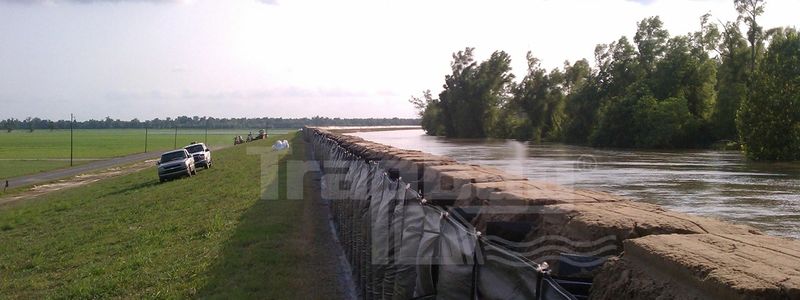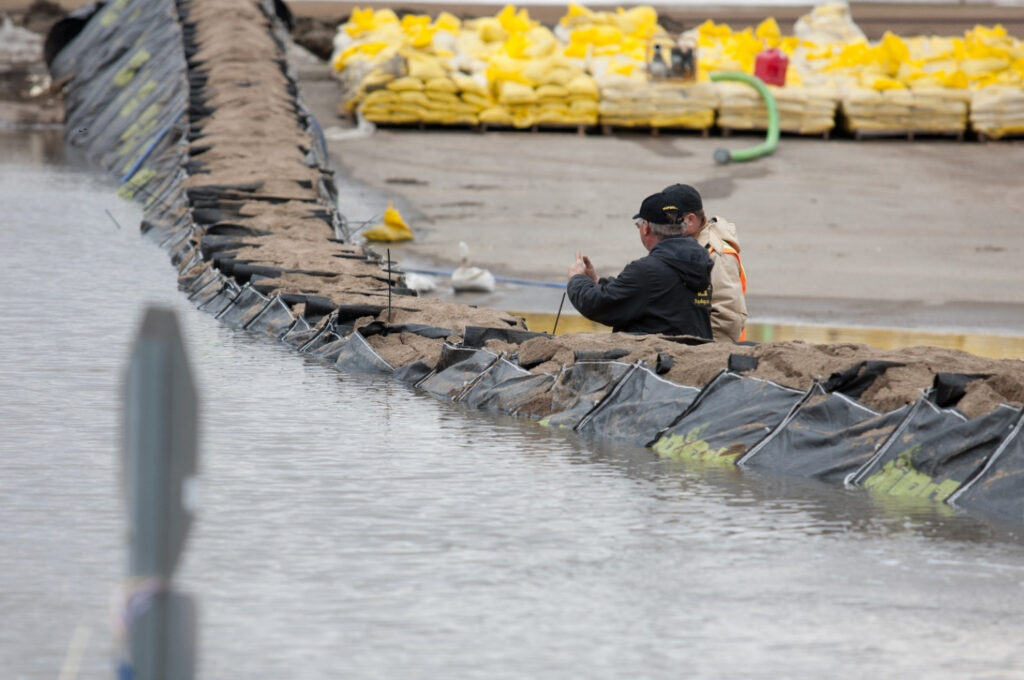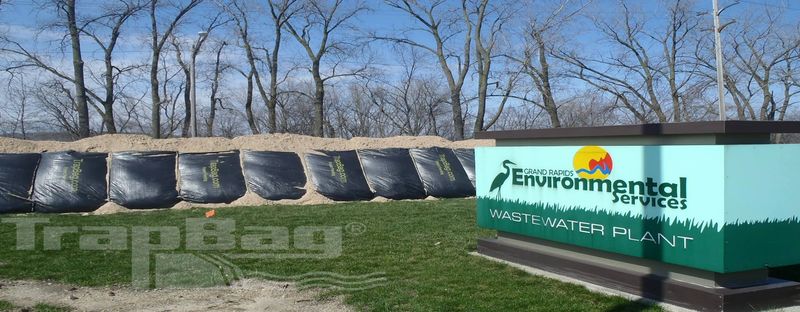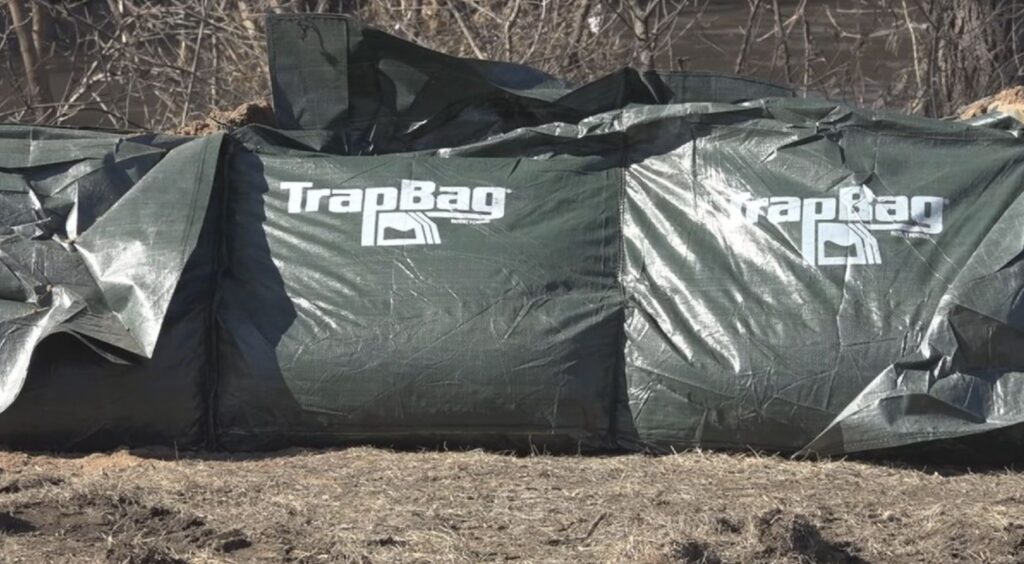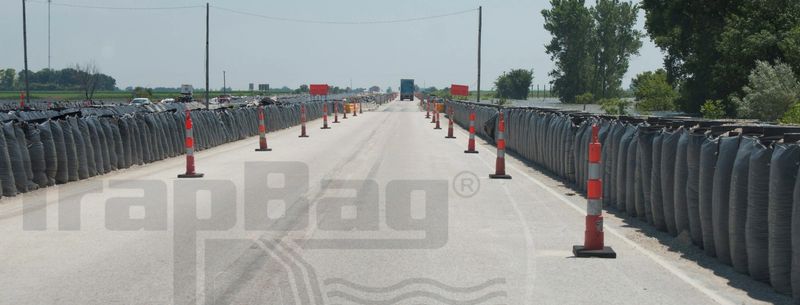Using TrapBag as Materials for Dam, Dike & Levee Construction
TrapBag was designed with flood protection in mind as a strengthened, improved alternative to the traditional sandbag. Whether you need to set up temporary levees or use them as dam construction materials, TrapBag protects what matters most by controlling and directing the flow of water, especially during high-risk scenarios.
TrapBag barriers make ideal dike and levee construction materials because they can keep water away from wherever you don’t need it. These barriers are a low-cost, rapid-deployment solution that is similar to, yet improves upon, the design of conventional sandbag barriers. They can withstand at least five years of UV exposure and have been successfully tested by the U.S. Army Corps of Engineers for their ability to hold back water.
Furthermore, using TrapBag as a temporary dike system can make it easier to regulate water levels in low-lying areas during periods of flooding or heavy rain. TrapBag can be used as the basis for a dike or water barrier that diverts flood waters away from construction sites while crews are constructing more permanent flood protection structures.
How They’re Deployed as Temporary Water Barriers
Whether you need temporary dike construction materials or the basis for a permanent dam, TrapBag is the solution. The barriers are easier to install and stronger than other types of flood protection barriers, including sandbags, all while being more cost-effective for temporary flood protection.
TrapBag can be set up as a flood control barrier in just a few simple steps:
-
Open the packaging: TrapBag barriers come folded up on a pallet. Pull your barrier out like an accordion and stretch it up to 50 linear feet per unit.
-
Place the barrier where you need it: Place the TrapBag barrier wherever you might need it, whether you’re reinforcing an existing levee or creating a temporary dam near a flood-prone area.
-
Fill the cells: A team of three people with an excavator or skid steer can fill your TrapBag barrier within minutes using sand, washed gravel, or concrete. You can also stack another barrier on top of it and fill that barrier as well for added height.
Who We Serve
Organizations and agencies across numerous industries use TrapBag to keep their communities and assets safe from the harmful effects of floods. Some of the groups we help include:
Municipalities & governments
Public works and emergency management departments use TrapBag as temporary flood protection barriers to protect low-lying streets or reinforce levee systems along waterways.
Learn More »Construction
Construction companies can use TrapBag barriers to protect their sites from washing out during periods of flooding. In turn, this allows them to more easily stick to the set project timeline and mitigate flood damage.
Learn More »Civil engineers
Civil engineering firms use TrapBag barriers to protect roadways and communities from flooding. In turn, they can prevent expensive damage to city infrastructure and reduce the need for repairs or reconstruction.
Learn More »Environmental protection services
Environmental protection organizations and agencies can use TrapBag as a temporary flood protection dam to reduce the damage that river and coastal floods can cause in habitats and other sensitive natural areas.
Learn More »Projects
How TrapBags Compare to:
Sandbags have been used for centuries as one of the only solutions people had to protect their communities during floods. They’re inexpensive and can be stacked to create makeshift dams, dikes, levees, and other structures that mitigate flood damage.
However, sandbags aren’t ideal for preventing flood damage. When stacked improperly, sandbag dams are more likely to fail or give way, causing catastrophic damage. They’re also labor-intensive to fill and require a large team of people several days of work to get the same result as a TrapBag barrier.
TrapBags require 40% less fill material than standard sandbags and require just two units for a 100-foot barrier, compared to almost 8,000 sandbags for a barrier with the same dimensions.
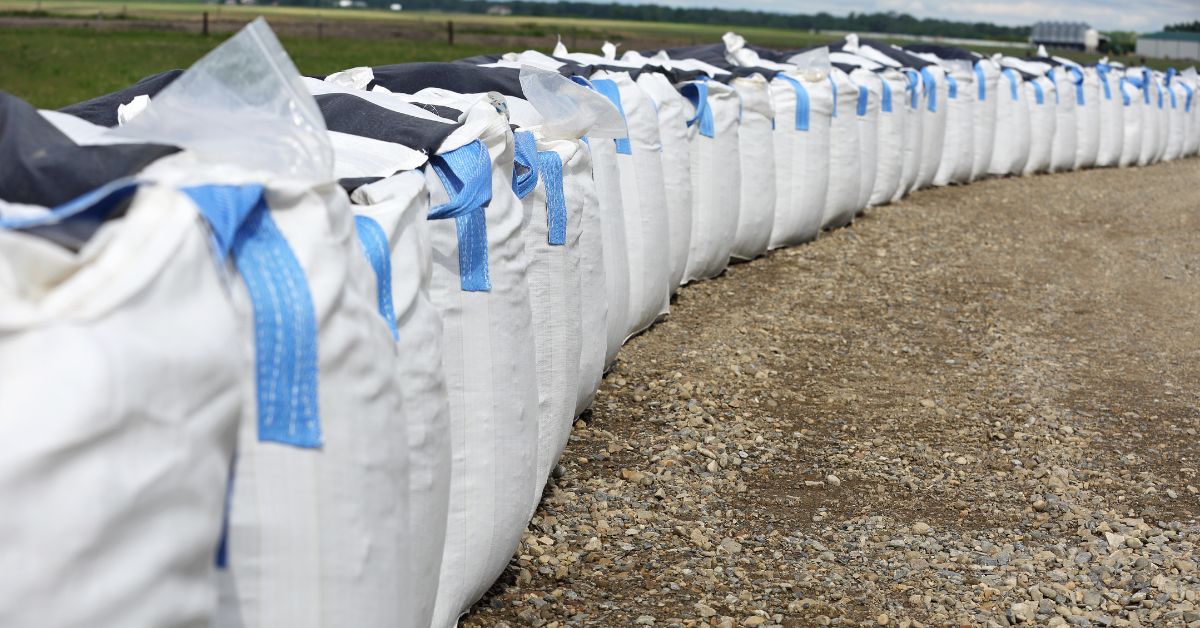
Why Choose TrapBag as a Flood Water Barrier Solution?
TrapBag was first designed in 2004 by our founder, Everett “Buzz” Waid, as an all-around improved alternative to traditional flood control solutions. He was inspired to create a better barrier after a hurricane devastated his Florida community.
Since then, we’ve found that TrapBag has ample uses beyond just protecting areas from flood damage. It can also be used to divert mudflows, as cofferdam systems for projects in the water, and as stormwater detention ponds.
TrapBags improve upon the design of traditional sandbags because of their pentagonal shape. Each cell has one sloped side and one vertical side for added integrity with 60% of the mass in the bottom 50% of the barrier.

